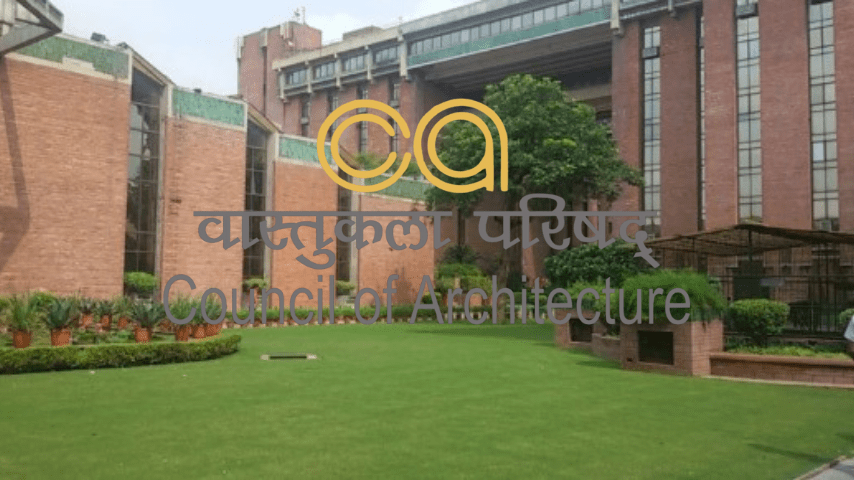
Council of Architecture (COA)-Future of Indian Architecture
Architecture is a profession that shapes the built environment, affecting how people live, work, and interact with the spaces around them. In India, the regulation of architectural practices and the setting of standards for education and professional conduct is crucial for ensuring that the profession maintains high integrity and quality. For aspiring architects, practicing professionals, and anyone with an interest in architecture, understanding how the regulatory framework works is essential. This blog explores the Council of Architecture (COA), its functions, and how it influences the architecture industry in India.
What is the Council of Architecture (COA)?
The Council of Architecture (COA) is the regulatory body for the profession of architecture in India. It was established under the Architects Act, 1972 by the Government of India to regulate and promote the practice of architecture. The COA ensures that only qualified professionals are allowed to practice architecture, safeguarding public interest and maintaining the quality of architectural practice in the country.
The COA is responsible for overseeing the registration of architects, accrediting architectural institutions, setting standards for education, and ensuring that architectural professionals adhere to ethical guidelines. It is the body that governs architectural practices and provides the legal framework for the profession in India.
Key Functions and Responsibilities of COA
1.Regulating Professional Practice
The COA plays a vital role in regulating architectural practice in India. It ensures that only individuals who meet the qualifications and professional standards are allowed to practice architecture. This helps maintain a high level of competence and professionalism in the industry.
2.Maintaining the Register of Architects
The COA maintains a national register that lists individuals who have successfully met the eligibility criteria and have been registered. Only registered architects are legally allowed to use the title “Architect” in India, ensuring that the profession is protected and regulated.
3.Setting Standards for Architectural Education
One of the COA’s primary roles is to set and maintain educational standards for architecture in India. The Council accredits architectural schools and ensures that their curricula are in line with the necessary qualifications to prepare competent architects.
4.Promoting Professional Development
The COA encourages continuous professional development by providing resources, guidance, and updates on the latest trends, technologies, and regulatory changes. This ensures that architects are always up-to-date with evolving industry standards.
5.Addressing Public Concerns
The COA also plays a role in addressing grievances from the public related to architects’ work or behavior. If any complaints are raised, the Council has the authority to investigate and take appropriate action.
Eligibility Criteria for Becoming an Architect in India
To legally practice architecture in India, individuals must meet the following eligibility criteria, as regulated by the COA:
1.Educational Qualifications
Aspiring architects must complete a Bachelor of Architecture (B.Arch.) degree from an institution accredited by the COA. The program generally lasts five years and includes a blend of theoretical knowledge and practical training.
2.Registration
After completing their education, individuals must register with the COA to legally use the title “Architect.” Registration is essential for anyone wishing to practice architecture in India.
3.Examinations
In certain cases, candidates may need to pass an examination or meet additional criteria set by the COA for formal registration.
COA's Role in Architecture Education
The COA’s role in regulating architectural education is critical to maintaining high standards in the profession. The Council accredits architectural institutions across India, ensuring that the curricula they offer meet the necessary requirements for producing competent architects. The COA also monitors these institutions to ensure they provide comprehensive and industry-relevant education.
The Importance of Being a Registered Architect
Being a registered architect with the COA comes with several advantages:
- Only those who are registered with the COA can legally use the title “Architect” in India. This professional recognition is essential for gaining credibility in the industry.
Registered architects are legally protected and can practice architecture across the country, with the assurance that they meet the requisite standards.
Registered architects must adhere to a strict code of conduct, ensuring that they maintain professionalism, integrity, and respect for public safety, client confidentiality, and welfare.
Regulating Architectural Practices
The COA not only oversees the registration of architects but also regulates how architects practice their profession. This includes enforcing a code of ethics that governs the relationships between architects, clients, and the public. The Council has the authority to investigate complaints against architects and take disciplinary action if needed, including issuing warnings or removing an architect from the register.
Guidelines and Regulations for Architects in India
Architects in India are required to follow a set of comprehensive guidelines and regulations. These guidelines are primarily governed by the COA, along with other national regulations:
1.The Architects Act, 1972:

The Architects Act provides the foundation for the registration of architects and outlines the ethical and professional standards that architects must adhere to. It also provides the COA with the power to take disciplinary actions if necessary.
2.National Building Code of India (NBC):

The NBC provides guidelines for building design and construction, ensuring the safety, sustainability, and consistency of architectural practices across the country. It covers various aspects such as structural integrity, fire safety, and environmental considerations.
3.Local and Regional Building Codes:

In addition to the national codes, each region may have specific building codes that cover aspects such as zoning laws, construction permits, and heritage conservation. These codes help architects adapt their designs to local needs and promote sustainable construction practices.
4.Environmental and Sustainable Design Guidelines:

With growing concerns for environmental sustainability, architects are encouraged to integrate green building practices. This includes designing energy-efficient structures, using sustainable materials, and considering water conservation measures.
5.Fire Safety Regulations:

Fire safety is a critical component in the design and construction of buildings. Architects are required to follow fire safety regulations, ensuring that their designs incorporate fire-resistant materials, emergency exits, and sprinkler systems.
6.Indian Standard Codes (IS Codes):

The Bureau of Indian Standards (BIS) issues IS Codes that govern various aspects of construction, including materials, structural design, and safety standards. Architects must follow these codes to ensure that their designs meet the required standards.
7.FSI (Floor Space Index) Guidelines:

FSI is an important factor in urban planning and construction that determines the maximum allowable floor area of a building relative to the size of the plot. Architects must ensure that the FSI is adhered to while designing buildings, as it directly affects the density, space utilization, and overall urban growth. It is a key regulation that varies from city to city and must be considered while planning any construction project.
8.LEED Certification:

LEED is a widely recognized green building certification system that evaluates the environmental performance of buildings across a range of categories, including energy efficiency, water conservation, material selection, and indoor air quality. Architects are increasingly expected to design buildings that comply with LEED standards to promote sustainability and minimize environmental impact. This certification helps buildings reduce their carbon footprint and contributes to creating more sustainable cities.
Conclusion: The Future of Architecture in India
The Council of Architecture plays a crucial role in the continued development of India’s architectural landscape. By regulating the profession, setting educational standards, and ensuring ethical practices, the COA helps maintain the quality and integrity of architecture in India.
For aspiring architects, becoming COA-registered is the first step toward establishing a reputable and successful career. The regulatory body’s influence ensures that architects are well-equipped to lead the way in creating innovative, sustainable, and functional designs for the future.
Ready to pursue a career in architecture? Make sure you meet the educational requirements, pass the exams, and get registered with the Council of Architecture to start your journey in one of India’s most impactful and rewarding professions. For more details, visit the Council of Architecture’s official website.


